The Forever Expanding House
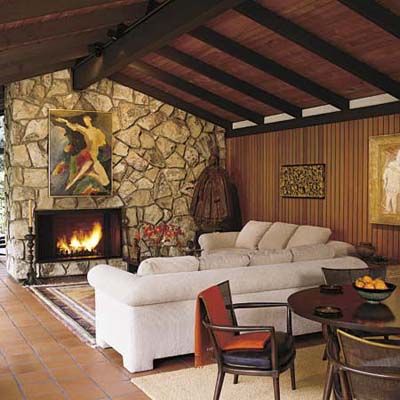
Fall in love with an existing house, and you expand where you can, praying the family doesn’t outgrow it. But fall in love with an empty plot of land, and you might do what architect Robert Lesnett did: build a house that’s prefigured to grow with you. When he found his dream lot in 1954, a woody three-quarters of an acre in West Los Angeles, Lesnett knew an add-as-you-go frame was a must for his young family.
Post and Beam
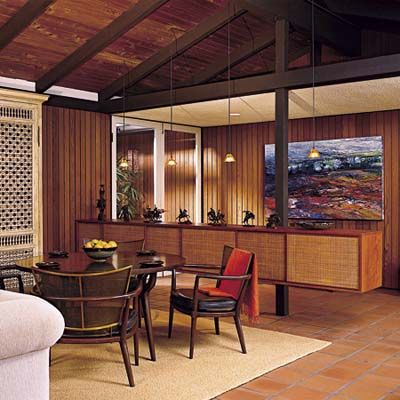
His background as an architect led him to a most practical idea: Design the house with very few load-bearing walls in the interior, and he’d be able to expand and reconfigure as necessary. The post-and-beam frame he employed allowed him to add a master suite, expand the garage, tack on a laundry room, and remodel the kitchen—all without disturbing the basic structure.
Custom touches, like this floating credenza in the entry hall, make practical use of the exposed posts.
The Expansion Plan
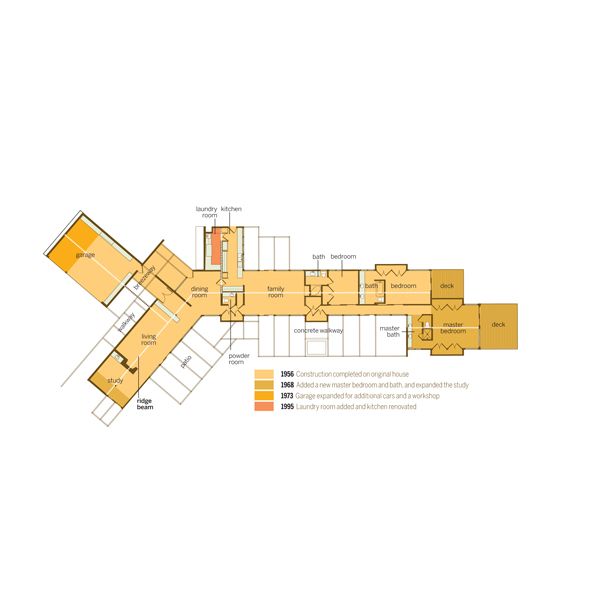
He started with three basic boxes that meet to form a Y shape. The short legs of the Y contained the living area, connected by a hallway to Lesnett’s study, and a two-car garage, respectively. The longer box held the dining room, followed by a powder room, the family room, two kids’ bedrooms, and the master suite. A bumpout off the dining room housed the kitchen. All the boxes were built the same way: with an especially thick 6-by-14-inch ridge beam supporting rafters 3 feet on center, resting on a header that transmits the roof’s weight to posts on the perimeter.
“It’s a simple grid,” Lesnett explains. “Wherever the exterior wood wall panels meet, which is about every 6 feet, there’s a structural post. It’s the same with the wall-sized panels of glass. So aside from a few bearing walls, you have an open plan where the partition walls can come and go with no additional roof support.”
Master Bedroom
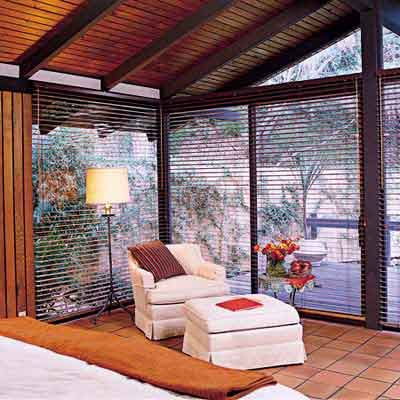
Twelve years after completing the house, he tested his plan, clipping off the south front corner and extending an existing corridor through the opening into a new 650-square-foot master suite. As in the other wings, the new 27-foot-long addition got its own sturdy ridge beam. To enlarge the family room and kids’ bedrooms, their walls were just pushed deeper into the master bedroom’s original space.
Moving Walls
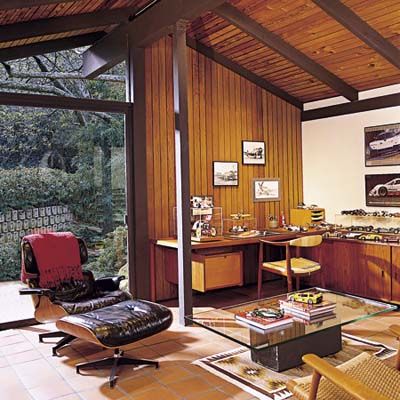
Lesnett pushed out the study’s exterior wall three feet in the first remodeling phase. The post marks where the end wall originally stood.
A New Kitchen
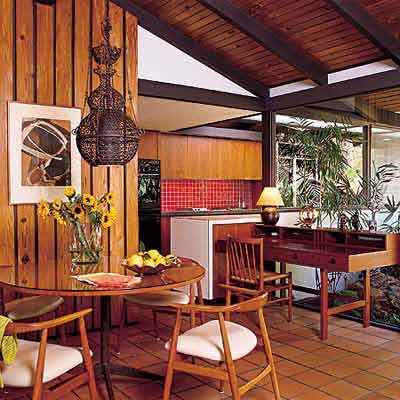
As time brought changes in Lesnett’s life—the kids grew up and moved away, Shirley died, and he married his second wife, Elsa—the house changed with him. In 1995, he remodeled the kitchen, breaking through a closet and widening the existing bumpout to create a new, fully loaded laundry room addition.
Teak cabinetry in the open kitchen blends in with the house’s other natural materials—quarry tile flooring, Douglas fir posts, and unstained cedar walls and ceilings.
Breezy Walkway
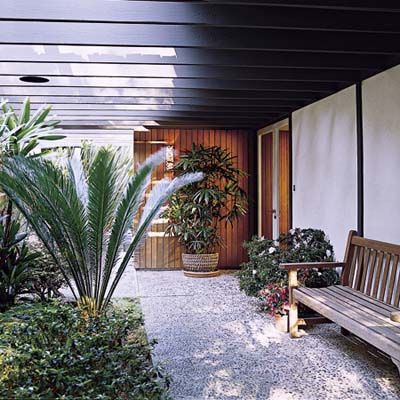
Blurring the line between indoors and out was high on his agenda from the beginning. Trelliswork over the entry’s breezeway pierces the dining area’s wall, where it continues inside as exposed beams. At first, not even interior walls blocked the views. When his children were young, for example, their bedroom walls slid away to open onto the glassed-in corridor overlooking the lawn. When they got older and needed more privacy, Lesnett built pocket doors that slide away into half-walls.
To give a natural look to the breezeway—and to save money—Lesnett designed his own walkways with river rocks tamped into the wet concrete.
Wall of Windows
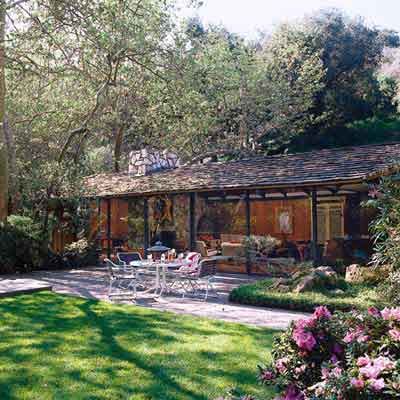
Walls of plate glass in the living room blur the line between indoor and out. Boulders used to landscape are the same ones Lesnett removed from a hill to clear the lot, a process that took two years. “The area was so pretty that I wanted everyone to be able to take advantage of the view from wherever they stood,” he says. “It’s like you’re under cover but also outdoors.” That feeling of never really being enclosed fools visitors into thinking the house is much wider than its actual 17 feet.
In all, Lesnett expanded his house from its original 2,450 square feet in the 1950s to 3,200 today, largely with his own hands. And although it all appears very polished, he says he did everything on a shoestring—$70,000 total, including labor and materials. That just goes to show what you can do when you have a house built to assist in its own remodeling.
